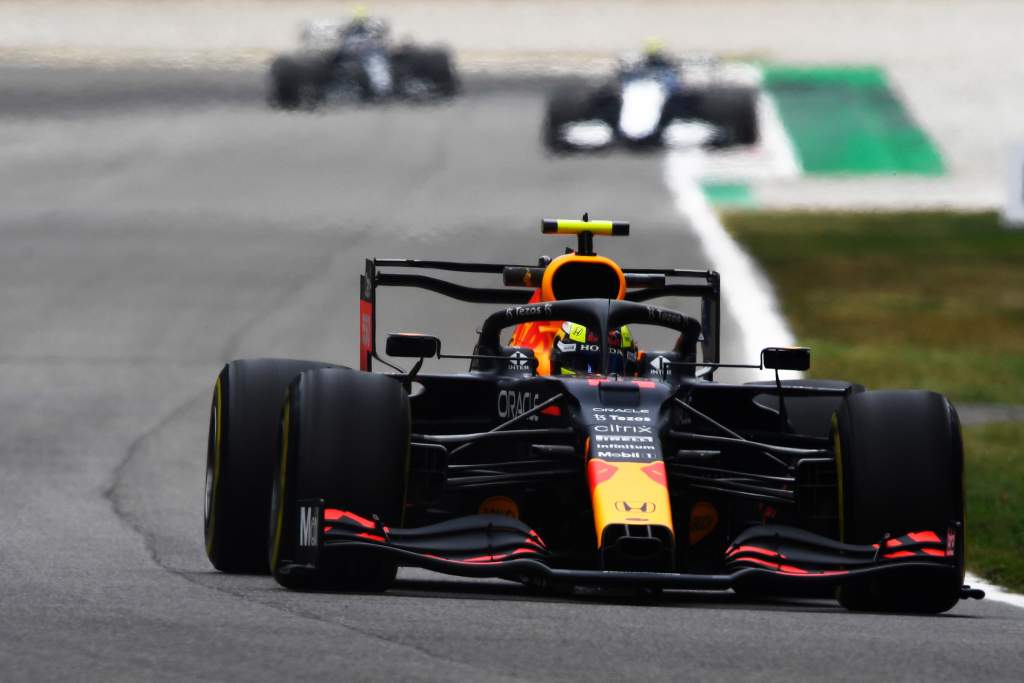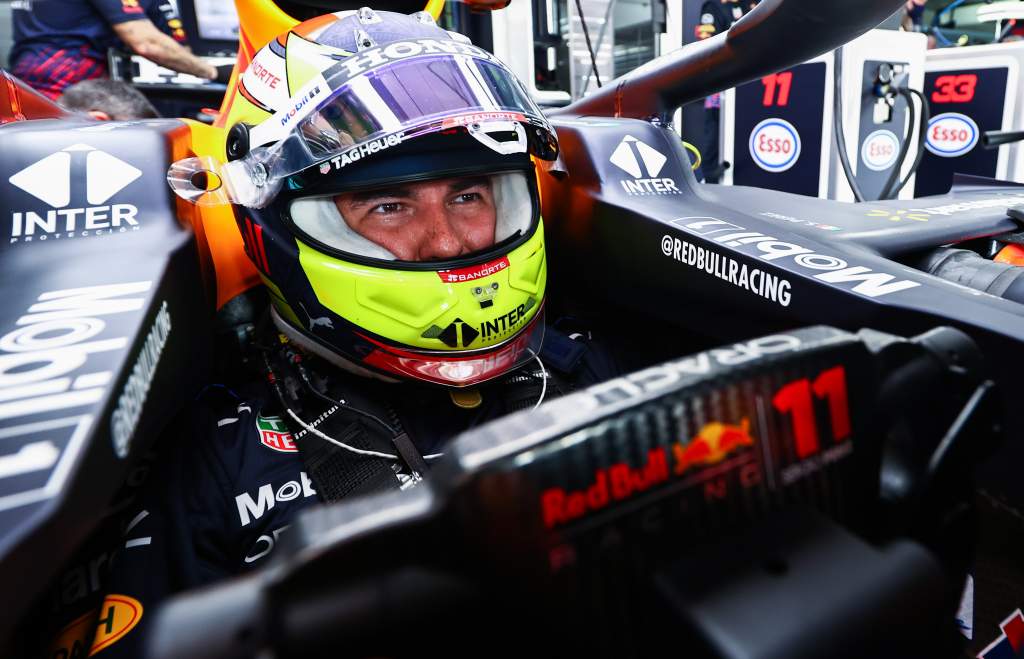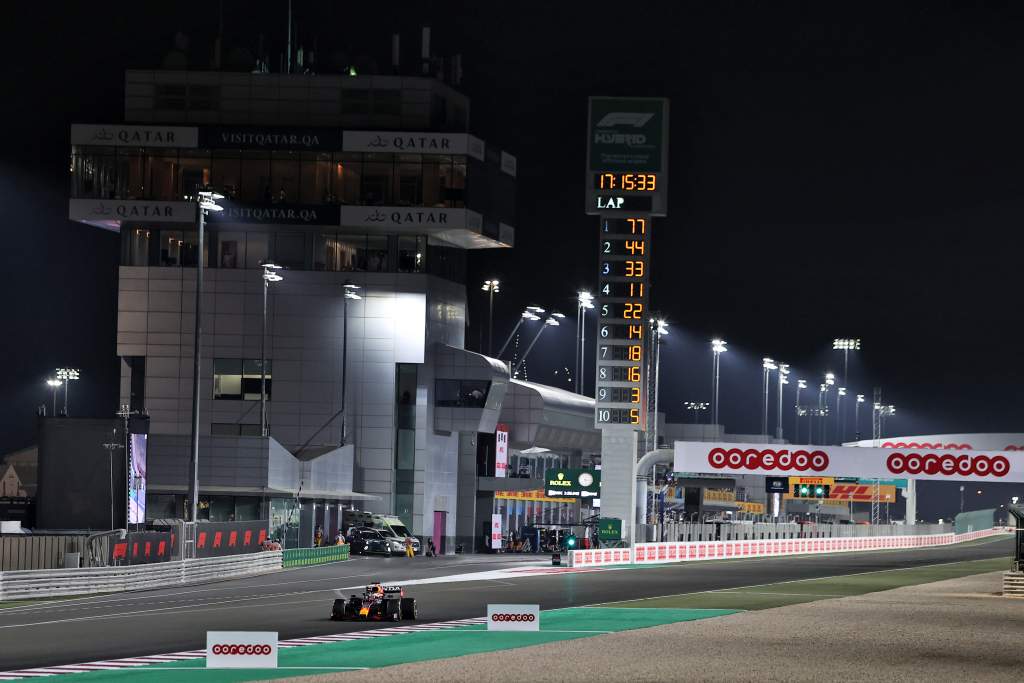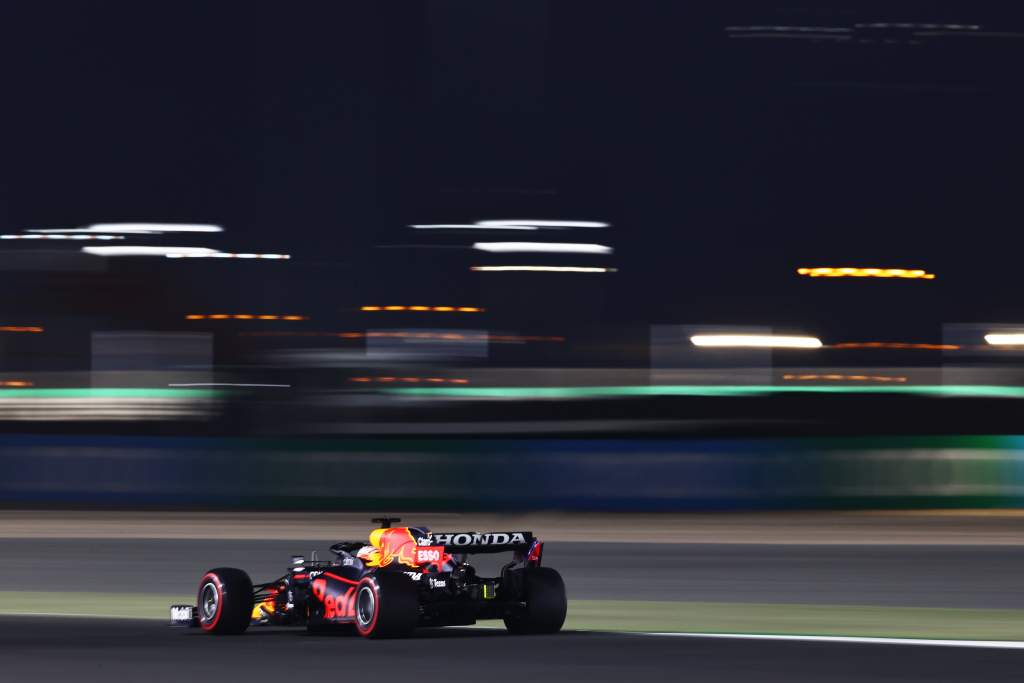Up Next

During Friday practice for the Qatar Grand Prix, we again saw the rear wing of the Red Bulls flapping around while on track. So what is going on?
The DRS zone starts quite early on the straight, just 200 metres after the last corner. The actuator force is balanced to open the slot between the two elements of the rear wing by moving the upper one to create a gap of no more than 85mm.
When this is opened, it will rest against a stop. So this means it is basically an open-or-shut system, either in its normal position against a stop that maintains the slot gap, or opened and on the open stop which is set at maximum gap.
As the speed of the car builds, the load will increase. If the upper flap is generating downforce in its own right, which it will, then the load on the actuator will increase with speed. This could overcome the force required to open the flap and create the flutter we sometimes see on the Red Bull rear wing assembly.
Watch the rear wing 👀 #QatarGP 🇶🇦 #F1 pic.twitter.com/N1ofpezHsy
— Formula 1 (@F1) November 19, 2021
The force initially required to get the flap moving and open it is the highest required as the complete two-element wing is producing load, so it wouldn’t surprise me to find that the pressure of the actuator stays the same and it is just the geometry of the mechanism that reduces this force holding it open.
The actuator will pull on some sort of a bell crank. Depending on the initial position of that bell crank and the final position of it, the force holding the flap open can be vastly different.
Again, it’s a bit like the gas strut holding open the bonnet or boot lid of your road car. Initially, this has very little force but when open it will hold the bonnet or boot open. This DRS actuator and the mechanism would be similar, just working the other way around with more force initially and then less force when open.
Depending on the wing required for each circuit, I wouldn’t be surprised if Red Bull was using a different actuator or bell crank assembly for different wings. The reason for this could be something to do with the ratio of cord of the mainplane to flap.
On smaller wings that produce less downforce, the loads will be less. You would still want to open it and shut it as quickly as possible, so it would just be about optimising the geometry of the mechanism and the actuator force to achieve this on a Monza wing (below) versus a Monaco wing.

The thing that has changed lately is that these cars are now running larger rear wings on most circuits than they would have done in the past. This is being done to increase the life of the tyres for the race and get them working earlier for qualifying.
I must add here that if I was in Adrian Newey’s shoes I would not be too happy with what I am seeing. There is no way the drag reduction will be as big as it should be with the flap moving around like that. Also, component fatigue and, in the end, structural failure of some part of the mechanism could be the result.
Over the last four races, we have seen Red Bull working on rear wing repairs right up to and even during qualifying. There have also been cases of parts changed before the race, most recently in Brazil they changed the upper flap of the rear wing and the flap snubber. This could very easily be those fatigue problems coming into play.
In FP2, we again saw this from Red Bull with the team fastening down Sergio Perez’s rear wing while he was in the garage in the middle of the session.

There is no way that Red Bull will have tested its rear wing in this condition or designed it to work like this. It will all be down to what is happening on the track, so it will be about reacting to this situation – meaning that the patches might just have to get bigger as the races go past.
Inevitably, with all the talk about flexibility, there’s a suspicion this might be some clever system. But I can’t see any benefit, only a disadvantage, to having the rear wing flapping like that when the DRS is open.
As we have not seen it happening consistently, I would be investigating if there was some other off-surface airflow that was generating turbulence and affecting the airflow to the rear wing.
If they were following another car, I would probably be the first to say that it was the turbulence coming off the leading car, but they weren’t doing this so perhaps it is something like the airflow spilling out around the rollover bar intake. This will increase when the car is harvesting, mainly because the turbo is not working flat out to generate plenum pressure, it is being held back with the MGU-H to charge up the battery pack.
Lots of strange things can happen when you change the mass flow going through these cars either for cooling or engine performance.

Red Bull has also been complaining about some score marks that it has seen on the inside of the Mercedes rear wing endplates. The team believes that this could be indicative of some part of the rear wing moving or flexing
But as we have heard from these two teams for most of this season, they are always trying to find fault in each other.
Yes, this is part of the game but it is detracting from what we should be appreciating as one of the best and closest seasons we have had for many years.





